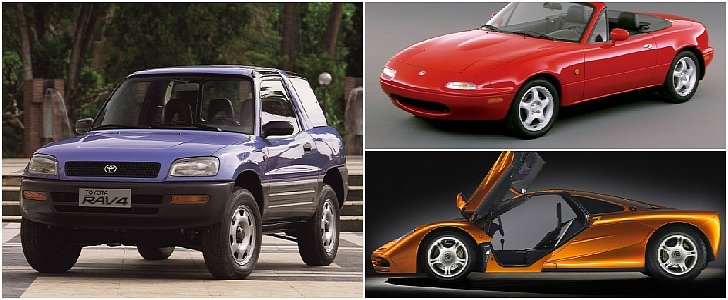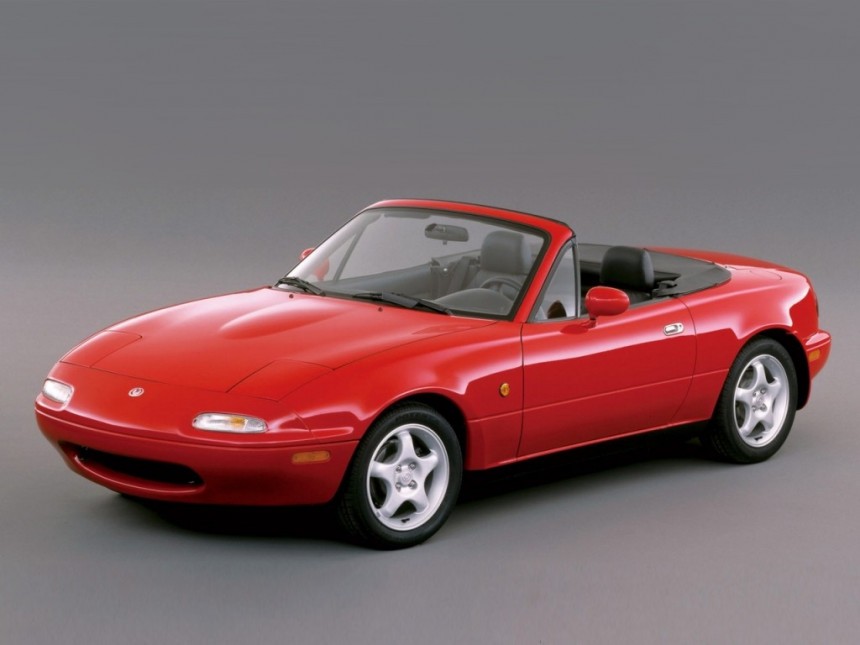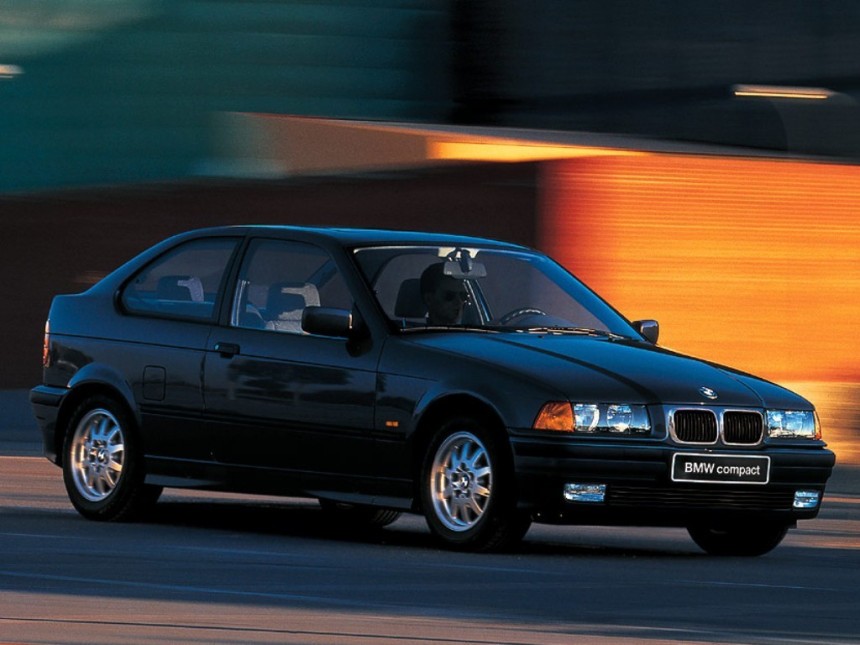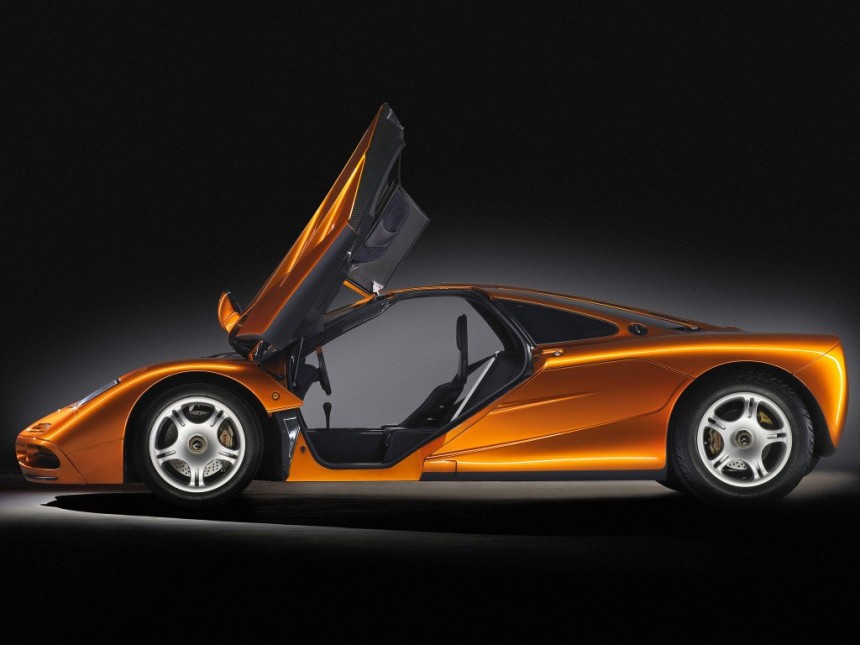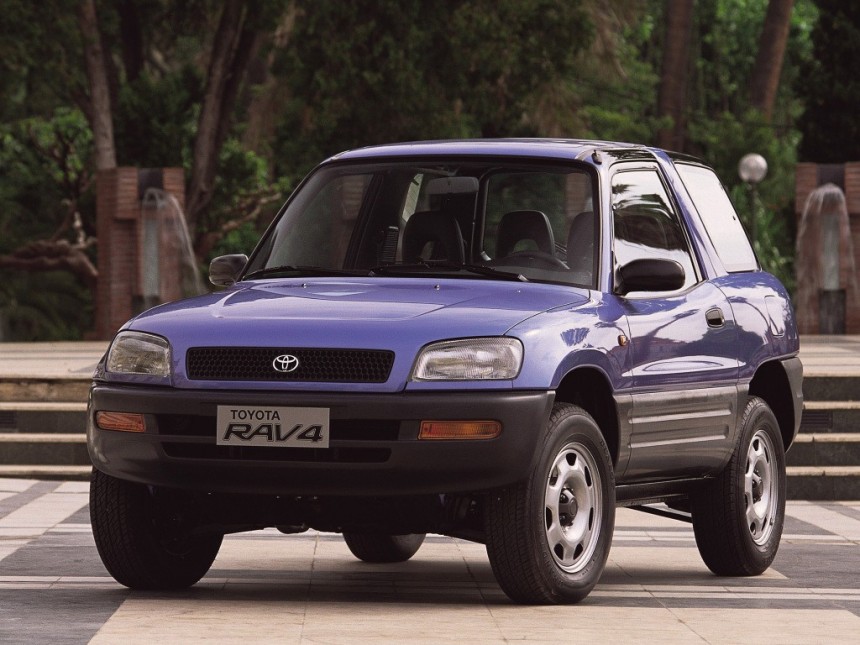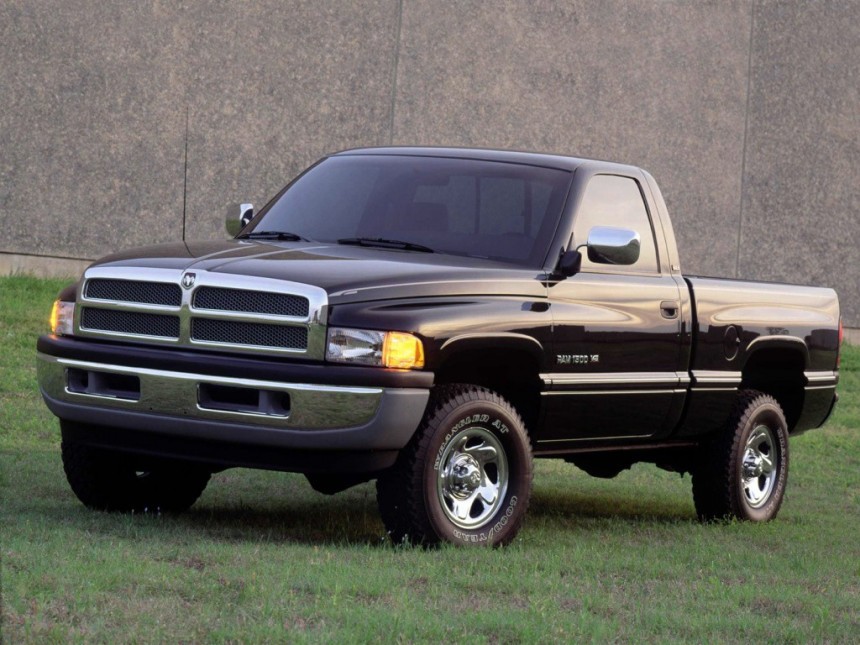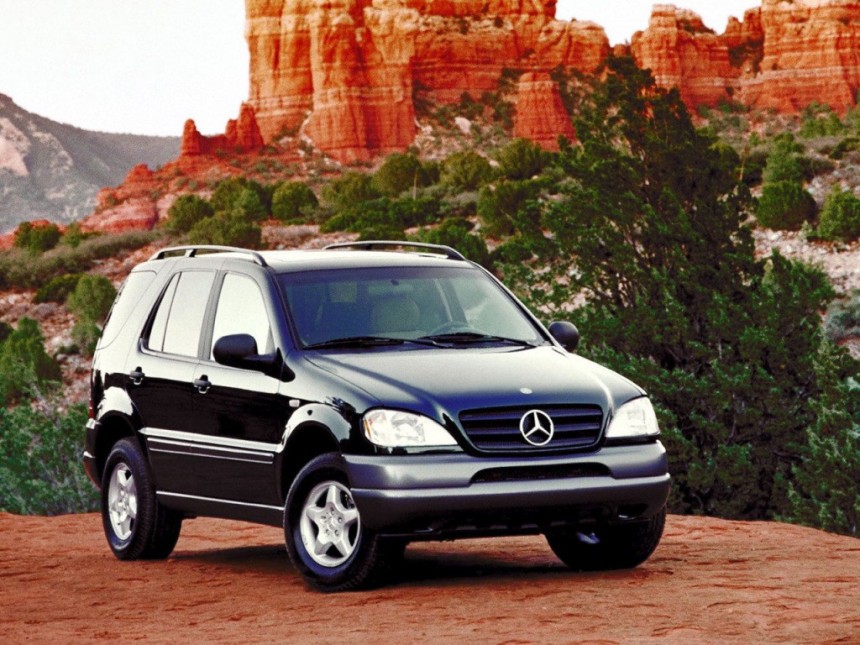Don't squint your eyes so much, the 1990s happened around two decades ago already, so I think I'm allowed to talk about them using terms like "old-school," or "back in the day." Heck, some cars built well into the mid-1990s have since achieved the youngtimer* status among classic fans.
I'm not here to talk about those, though, but about a number of 1990s cars so progressive that they helped shape not only the era they were born in, but the current car market as well.
That is a very hard thing to do, creating something that continues to inspire future generations. You're probably well aware that in almost every field that involves creativity, whether we're talking music, painting, writing or designing cars, standing the test of time is not easily achieved. Just take a look at most glam rock bands of the 1980s and tell me how many men do you still see dressing like that on purpose.
Getting back to cars, you may not think much of some of the following models, but the truth is that without them we would have likely had a very different-looking market today, and not necessarily for the better.
*youngtimer - a term mainly used in Germany for oldtimer cars that aren't that old.
1989 Mazda MX-5 Miata
Technically, the first MX-5 Miata was unveiled in 1989, but everyone considers it as 1990s as "Saved by the Bell" or "Baywatch," which were both first aired in 1989 as well, coincidentally. The original idea behind the MX-5 Miata came from a former MotorTrend journalist that turned automotive product planner at Mazda. In short, the small roadster resurrected the archetypal British roadster of the 1960s into a modern format, but it also re-introduced sports car fans to the basics of driving.
All three generations that followed the original NA remained true to the same "Jinba ittai" credo, which is a Japanese term that can be largely translated into "rider and horse as one," for obvious reasons.
In the beginning, some folks saw the Miata as just another niche model that would soon be forgotten. Little did they know that it would become the best-selling two-seater sports cars in history. Seriously, look it up in the Guinness World Records. Not only that, but thanks to its existence we can nowadays choose from a multitude of roadsters and light, RWD sports cars that would have probably never came to be if it hadn't been for the little Mazda that could.
The BRZ/FR-S/GT86 trio, BMW Z4, Mercedes-Benz SLK and the Porsche Boxster owe some of their success and maybe even very existence to the MX-5 Miata.
Ironically, the ND generation of the model directly spawned at least one other modern lightweight roadster, in the shape of the Fiat 124 Spyder and an Abarth model as well.
1993 BMW 3 Series Compact E36/5
Unlike nowadays, German premium carmakers used to be more afraid of entering mainstream segments in the 1980s and 1990s, even though some of them came from more... humble beginnings (*cough* Audi! *cough*). For example, it took a great deal of convincing the top brass at Mercedes-Benz to launch something like the 190, when the company had become known mainly for land yachts and luxury sports cars prior to that.
Still, the 190 didn't represent such a giant leap for Mercedes-Benz as the 3 Series Compact did for BMW when it came on the market in 1993.
Despite looking like a 3 Series Coupe E36 with its rear chopped off, the first BMW Compact was actually a mix between the E36 and E30 platforms, having more things in common with the first BMW Z3 underneath that raked body.
Why is it important for today's car market? Well, some would say that the first 3 Series Compact paved the way for the current premium compacts from Germany and not only, including for the BMW 1 Series family. While in the beginning it was seen as an oddity, as none of BMW's rivals had been gutsy enough to test the waters in which the VW Golf was pretty much king, now it's pretty normal to see a premium compact on the road.
Heck, even Audi has the A3/S3/RS3 these days, while Mercedes-Benz went as far as injecting up to 421 horsepower in its compact models.
1993 McLaren F1
Needing no introduction, the F1 came at a time when the fastest cars in the world barely managed around 200 mph. The first McLaren road car took that number and gave it the shocker when it hit 243 mph (391 kph) at Volkswagen's Ehra-Lessien test track. Sure, it wasn't the world's first supercar, not by a long shot, but from some perspectives it could be heralded as the first production hypercar.
It arrived long before face-tearingly fast models like the modern Bugattis, Koenigseggs or the trio comprising the P1, 918 Spyder and LaFerrari turned the page of performance and became synonymous with race car performance on the road.
Speaking of race cars, the F1 is also the only production-based car that managed to win Le Mans with no structural modifications, outperforming custom-built prototype racers of the time. Some of the F1 GTRs that took the French endurance race by storm in 1995 have since been converted back to being street legal. Try doing that with an LMP1 prototype in this day and age – though, to be fair, Cameron Glickenhaus is trying a similar road car/race car shenanigan with the SCG003.
Even so, without the very existence of the McLaren F1, which is still the fastest naturally aspirated production car in history, the modern hypercar segment could have looked entirely different.
On a personal note, I think it achieved these feats quite well, since it offered more interior room and better visibility than a regular econobox, while its available all-wheel drive and relatively high ground clearance made it a pretty good off-roader.
In fact, the RAV4 has become so successful over the years that it not only spawned two more generations, but a gigantic market segment as well. That segment is currently so large it may even outnumber the two types of vehicles it combined (compact cars and small SUVs).
1994 Audi RS2
This is the one car that started them all at Audi's Quattro GmbH, the RS2 from 1994. It was the first "RS" Audi and the first supersport station wagon, which currently seems to be the newest craze if we look at superfast behemoths like the latest RS6 Avant, Mercedes-Benz E63 AMG S-Model Wagon and even the now-defunct Cadillac CTS-V Wagon. One thing's for sure, it was the RS2 that spawned this niche segment.
Although looking very much like a sleeper, or a Q-car if you prefer, a trained eye could easily spot that something was a bit off with the model. The alloy wheels and side mirrors were taken straight from the Porsche 964 Turbo S2, which was not exactly a coincidence considering the Audi RS2's credentials.
The world's first feisty station wagon was actually the result of a collaboration between Audi and Porsche, and it was even built at Porsche's Rossle-Blau factory, where legends like the Mercedes-Benz 500 E and the Porsche 959 had been built as well. The RS2's grunt came from a turbocharged inline-five cylinder that developed 315 horsepower.
It may not sound like much today, when hot-hatches have passed the 400 horsepower mark and are faster than an M3 on the Nordschleife, but back in 1994 this was massive. Not to mention that all that power was carefully packed in an almost-ordinary looking station wagon and the quattro all-wheel-drive system was tuned for performance, not safety.
1994 Dodge Ram
An American pickup truck in a list about progressive 1990s cars? Really? Well, the 1994 Dodge Ram was more than just your average pickup, as it didn't just break the mold in its highly lucrative and mostly-American segment, it downright nuked it. Originally, the second generation of the Ram was supposed to come out sometime around 1991, looking as fuddy-duddy as all its rivals from Ford and GM at the time.
Despite being a worker's car, which traditionally didn't need a fancy look, it seems that Dodge's chief of design at the time managed to convince "Maximum" Bob Lutz to send the Ram back to the drawing board.
Following some brainstorming and a couple of secret workshops, the design team under Phillip E. Payne decided to give the truck a look usually found on "big rig" 18-wheelers, making it about 3.4 times more macho than any of it competitors at the time.
Looking almost like a concept when it went on sale, the 1994 Dodge Ram became not only a huge sales success over the years, but also created a yardstick for almost all American pickup trucks that followed. They were no longer just plain-looking work trucks, but good-looking ones as well.
1997 Mercedes-Benz M-Class
Even though both the Range Rover and from some perspectives the Jeep Wagoneer predated the first generation of the model, it was the Mercedes-Benz M-Class W163 that pretty much started the luxury crossover/SUV segment everyone either loves or hates nowadays. Mercedes-Benz had first attempted to domesticate the army-grade G-Class into a luxury SUV, but the mighty G-Wagen has always been in a class of its own out there.
Not exactly common knowledge, but the M-Class W163 was this close to being based on the second-generation Mitsubishi Montero/Pajero/Shogun, but the deal fell through, and Mercedes-Benz went on its own with the model.
Another less-known and equally disconcerting fact about Merc's first luxury SUV is that mad scientist Ferdinand Piech, while heading Volkswagen AG at the time, had planned to base the first Volkswagen Touareg on the ML instead of sharing the same platform with the Porsche Cayenne and eventually the Audi Q7. Apparently, Piech was angered by Mercedes-Benz taking a bite out of Volkswagen Golf's market share with the A-Class, so he cut all diplomatic ties with the Stuttgart carmaker. That is also how the VW Phaeton came to be, by the way, but that is an automotive revenge story for another time.
Getting back to the first Mercedes-Benz ML, it should be noted that despite looking like a crossover, the model was pretty old-school technology-wise, featuring a body-on-frame design and a two-speed dual range transfer case with reduction gearing. They don't really make them like they used to from this point of view.
That is also a good thing, actually, because the first-generation M-Class was also plagued with a host of reliability problems unheard off at Mercedes-Benz until that time. Even so, its part in shaping the current automotive trend is undeniable, so you can say it was way ahead of its time.
That is a very hard thing to do, creating something that continues to inspire future generations. You're probably well aware that in almost every field that involves creativity, whether we're talking music, painting, writing or designing cars, standing the test of time is not easily achieved. Just take a look at most glam rock bands of the 1980s and tell me how many men do you still see dressing like that on purpose.
Getting back to cars, you may not think much of some of the following models, but the truth is that without them we would have likely had a very different-looking market today, and not necessarily for the better.
*youngtimer - a term mainly used in Germany for oldtimer cars that aren't that old.
1989 Mazda MX-5 Miata
Technically, the first MX-5 Miata was unveiled in 1989, but everyone considers it as 1990s as "Saved by the Bell" or "Baywatch," which were both first aired in 1989 as well, coincidentally. The original idea behind the MX-5 Miata came from a former MotorTrend journalist that turned automotive product planner at Mazda. In short, the small roadster resurrected the archetypal British roadster of the 1960s into a modern format, but it also re-introduced sports car fans to the basics of driving.
All three generations that followed the original NA remained true to the same "Jinba ittai" credo, which is a Japanese term that can be largely translated into "rider and horse as one," for obvious reasons.
The BRZ/FR-S/GT86 trio, BMW Z4, Mercedes-Benz SLK and the Porsche Boxster owe some of their success and maybe even very existence to the MX-5 Miata.
Ironically, the ND generation of the model directly spawned at least one other modern lightweight roadster, in the shape of the Fiat 124 Spyder and an Abarth model as well.
1993 BMW 3 Series Compact E36/5
Unlike nowadays, German premium carmakers used to be more afraid of entering mainstream segments in the 1980s and 1990s, even though some of them came from more... humble beginnings (*cough* Audi! *cough*). For example, it took a great deal of convincing the top brass at Mercedes-Benz to launch something like the 190, when the company had become known mainly for land yachts and luxury sports cars prior to that.
Still, the 190 didn't represent such a giant leap for Mercedes-Benz as the 3 Series Compact did for BMW when it came on the market in 1993.
Why is it important for today's car market? Well, some would say that the first 3 Series Compact paved the way for the current premium compacts from Germany and not only, including for the BMW 1 Series family. While in the beginning it was seen as an oddity, as none of BMW's rivals had been gutsy enough to test the waters in which the VW Golf was pretty much king, now it's pretty normal to see a premium compact on the road.
Heck, even Audi has the A3/S3/RS3 these days, while Mercedes-Benz went as far as injecting up to 421 horsepower in its compact models.
1993 McLaren F1
Needing no introduction, the F1 came at a time when the fastest cars in the world barely managed around 200 mph. The first McLaren road car took that number and gave it the shocker when it hit 243 mph (391 kph) at Volkswagen's Ehra-Lessien test track. Sure, it wasn't the world's first supercar, not by a long shot, but from some perspectives it could be heralded as the first production hypercar.
It arrived long before face-tearingly fast models like the modern Bugattis, Koenigseggs or the trio comprising the P1, 918 Spyder and LaFerrari turned the page of performance and became synonymous with race car performance on the road.
Even so, without the very existence of the McLaren F1, which is still the fastest naturally aspirated production car in history, the modern hypercar segment could have looked entirely different.
1994 Toyota RAV4
Do you feel like the current car market is increasingly saturated with compact crossovers? Well, you probably need to "thank" the first Toyota RAV4 for this trend. When it was launched over two decades ago, the compact crossover market didn't even exist. The RAV4's raison d'être was to unify the best of two very different worlds but without resulting in a compromise.In fact, the RAV4 has become so successful over the years that it not only spawned two more generations, but a gigantic market segment as well. That segment is currently so large it may even outnumber the two types of vehicles it combined (compact cars and small SUVs).
1994 Audi RS2
This is the one car that started them all at Audi's Quattro GmbH, the RS2 from 1994. It was the first "RS" Audi and the first supersport station wagon, which currently seems to be the newest craze if we look at superfast behemoths like the latest RS6 Avant, Mercedes-Benz E63 AMG S-Model Wagon and even the now-defunct Cadillac CTS-V Wagon. One thing's for sure, it was the RS2 that spawned this niche segment.
Although looking very much like a sleeper, or a Q-car if you prefer, a trained eye could easily spot that something was a bit off with the model. The alloy wheels and side mirrors were taken straight from the Porsche 964 Turbo S2, which was not exactly a coincidence considering the Audi RS2's credentials.
It may not sound like much today, when hot-hatches have passed the 400 horsepower mark and are faster than an M3 on the Nordschleife, but back in 1994 this was massive. Not to mention that all that power was carefully packed in an almost-ordinary looking station wagon and the quattro all-wheel-drive system was tuned for performance, not safety.
1994 Dodge Ram
An American pickup truck in a list about progressive 1990s cars? Really? Well, the 1994 Dodge Ram was more than just your average pickup, as it didn't just break the mold in its highly lucrative and mostly-American segment, it downright nuked it. Originally, the second generation of the Ram was supposed to come out sometime around 1991, looking as fuddy-duddy as all its rivals from Ford and GM at the time.
Despite being a worker's car, which traditionally didn't need a fancy look, it seems that Dodge's chief of design at the time managed to convince "Maximum" Bob Lutz to send the Ram back to the drawing board.
Following some brainstorming and a couple of secret workshops, the design team under Phillip E. Payne decided to give the truck a look usually found on "big rig" 18-wheelers, making it about 3.4 times more macho than any of it competitors at the time.
Looking almost like a concept when it went on sale, the 1994 Dodge Ram became not only a huge sales success over the years, but also created a yardstick for almost all American pickup trucks that followed. They were no longer just plain-looking work trucks, but good-looking ones as well.
1997 Mercedes-Benz M-Class
Even though both the Range Rover and from some perspectives the Jeep Wagoneer predated the first generation of the model, it was the Mercedes-Benz M-Class W163 that pretty much started the luxury crossover/SUV segment everyone either loves or hates nowadays. Mercedes-Benz had first attempted to domesticate the army-grade G-Class into a luxury SUV, but the mighty G-Wagen has always been in a class of its own out there.
Not exactly common knowledge, but the M-Class W163 was this close to being based on the second-generation Mitsubishi Montero/Pajero/Shogun, but the deal fell through, and Mercedes-Benz went on its own with the model.
Getting back to the first Mercedes-Benz ML, it should be noted that despite looking like a crossover, the model was pretty old-school technology-wise, featuring a body-on-frame design and a two-speed dual range transfer case with reduction gearing. They don't really make them like they used to from this point of view.
That is also a good thing, actually, because the first-generation M-Class was also plagued with a host of reliability problems unheard off at Mercedes-Benz until that time. Even so, its part in shaping the current automotive trend is undeniable, so you can say it was way ahead of its time.
